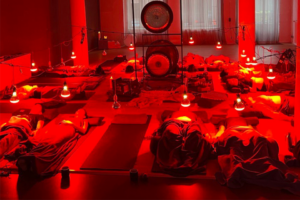Red Light Therapy and Cancer: Illuminating the Facts and Possibilities

Red light therapy has been making waves in the world of health and wellness, but what about its relationship with cancer? This article dives deep into the current understanding of red light therapy and its potential implications for cancer treatment and prevention. Whether you’re a cancer patient, a health enthusiast, or simply curious about cutting-edge therapies, this comprehensive guide will shed light on the fascinating intersection of red light therapy and cancer.
Table of Contents
What is Red Light Therapy and How Does It Work?
Red light therapy, also known as photobiomodulation or low-level light therapy, uses specific wavelengths of red and near-infrared light to stimulate cellular processes in the body. This non-invasive treatment exposes the body to red or near-infrared light, typically ranging from 630 to 850 nanometers.The science behind red light therapy involves the absorption of light by mitochondria, the powerhouses of our cells. This process can lead to increased ATP production, improved cellular function, and various potential health benefits. While not a direct cancer treatment, red light therapy has shown promise in supporting overall health and potentially complementing traditional cancer therapies. Learn more about the science behind red light therapy and its various applications
Can Red Light Therapy Cause Cancer?
One of the most pressing questions surrounding red light therapy is whether it can cause cancer. It’s crucial to understand that red light therapy does not use UV light, which is known to damage DNA and increase cancer risk. The wavelengths used in red light therapy are considered non-ionizing and do not have the same potential for cellular damage as UV radiation.Current research suggests that red light therapy is generally considered safe and does not directly cause cancer. In fact, some studies have shown that it may have protective effects against certain types of skin damage that could lead to cancer. However, as with any medical treatment, it’s essential to consult with a healthcare professional before starting red light therapy, especially if you have a history of skin cancer or other skin conditions.
Red Light Therapy and Cancer Treatment: What Does the Research Say?
While red light therapy is not a standalone cancer treatment, some studies have explored its potential to support conventional cancer therapies:
- Photodynamic Therapy: This treatment combines light-sensitive drugs with specific wavelengths of light to target cancer cells. Red light therapy may enhance the effectiveness of photodynamic therapy in some cases.
- Reducing Side Effects: Some research suggests that red light therapy may help alleviate side effects of cancer treatments, such as oral mucositis in patients undergoing chemotherapy or radiation therapy.
- Improving Wound Healing: For cancer patients recovering from surgery, red light therapy might aid in wound healing and reduce scarring.
- Potential Anti-Tumor Effects: Early studies in cell cultures and animal models have shown some promising results regarding the potential anti-tumor effects of red light therapy, but more research is needed to confirm these findings in humans.
It’s important to note that while these areas show promise, red light therapy should never be used as a replacement for conventional cancer treatments prescribed by oncologists.

Is Red Light Therapy Safe for Cancer Patients?
The safety of red light therapy for cancer patients is a complex topic that requires individualized consideration. Generally, light therapy is considered safe when used as directed, but cancer patients should always consult their oncologist before starting any new treatment, including red light therapy.Factors to consider include:
- The type and stage of cancer
- Current treatments being received
- Potential interactions with medications
- Overall health status
Your healthcare team can provide personalized advice on whether red light therapy is appropriate for your specific situation.
Can Red Light Therapy Help Prevent Cancer?
While red light therapy is not a direct cancer prevention method, some research suggests it may have protective effects that could potentially lower cancer risk:
- Skin Health: Red light therapy may improve skin health and potentially reduce the risk of certain types of skin damage that can lead to skin cancer.
- Cellular Health: By promoting cellular function and reducing oxidative stress, red light therapy might support overall cellular health.
- Immune Function: Some studies indicate that red light therapy could enhance immune system function, which plays a crucial role in cancer prevention.
However, it’s essential to remember that maintaining a healthy lifestyle, including a balanced diet, regular exercise, and avoiding known carcinogens, remains the most effective way to reduce cancer risk.
Red Light Therapy for Skin Cancer: Potential Benefits and Risks
When it comes to skin cancer, red light therapy presents an interesting area of study:Potential Benefits:
- May help repair sun-damaged skin
- Could enhance the effectiveness of photodynamic therapy for certain skin cancers
- Might improve wound healing after skin cancer removal surgery
Potential Risks:
- Not suitable as a standalone treatment for skin cancer
- Could potentially stimulate growth of existing skin cancers if used improperly
- May interfere with certain skin cancer treatments
Always consult a dermatologist or oncologist before using red light therapy if you have a history of skin cancer or are at high risk.
How to Use Red Light Therapy Safely
If you’re considering using red light therapy, follow these guidelines to ensure safety:
- Consult your healthcare provider, especially if you have cancer or a history of skin cancer.
- Use FDA-cleared devices from reputable manufacturers.
- Follow the manufacturer’s instructions carefully.
- Start with shorter sessions and gradually increase duration as recommended.
- Protect your eyes with appropriate eyewear during treatments.
- Monitor your skin for any adverse reactions.
- Do not use red light therapy as a substitute for sunscreen or other sun protection measures.
Explore safe and effective red light therapy devices for home use
The Future of Red Light Therapy in Cancer Research
The field of red light therapy and its potential applications in cancer care is evolving rapidly. Ongoing research is exploring:
- Combination therapies using red light with other cancer treatments
- Targeted delivery of red light therapy to specific tumor sites
- Potential for red light therapy in cancer prevention strategies
- Long-term effects of red light therapy on cancer risk and progression
As more clinical trials are conducted, we’ll gain a clearer understanding of how red light therapy might be integrated into comprehensive cancer care plans.
Frequently Asked Questions About Red Light Therapy and Cancer
Can red light therapy shrink tumors?
While some preliminary studies show promise, there’s currently not enough evidence to suggest that red light therapy can directly shrink tumors in humans.
How often should I use red light therapy?
Frequency depends on the specific device and your individual health needs. Follow manufacturer guidelines and consult a healthcare professional.
Can red light therapy replace traditional cancer treatments?
No, red light therapy should not be used as a replacement for conventional cancer treatments prescribed by oncologists.
Are there any side effects of red light therapy?
When used properly, side effects are typically mild and may include temporary redness or warmth in the treated area.
Is red light therapy safe during chemotherapy?
It may be safe, but always consult your oncologist before starting any new therapy during cancer treatment.
Conclusion: Illuminating the Path Forward
Red light therapy offers an intriguing avenue for supporting overall health and potentially complementing cancer care. While it’s not a cure or standalone treatment for cancer, the growing body of research suggests that it may have a role to play in improving quality of life for cancer patients and potentially supporting cancer prevention efforts.Key takeaways:
- Red light therapy is generally considered safe and does not directly cause cancer
- It may offer benefits in supporting conventional cancer treatments and managing side effects
- More research is needed to fully understand its potential in cancer prevention and treatment
- Always consult with healthcare professionals before incorporating red light therapy into your health regimen, especially if you have cancer or a history of skin cancer
As we continue to explore the potential of red light therapy, it’s crucial to approach this technology with both optimism and caution. By staying informed and working closely with healthcare providers, we can harness the power of light to illuminate new possibilities in health and healing. Discover the latest advancements in red light therapy technology






